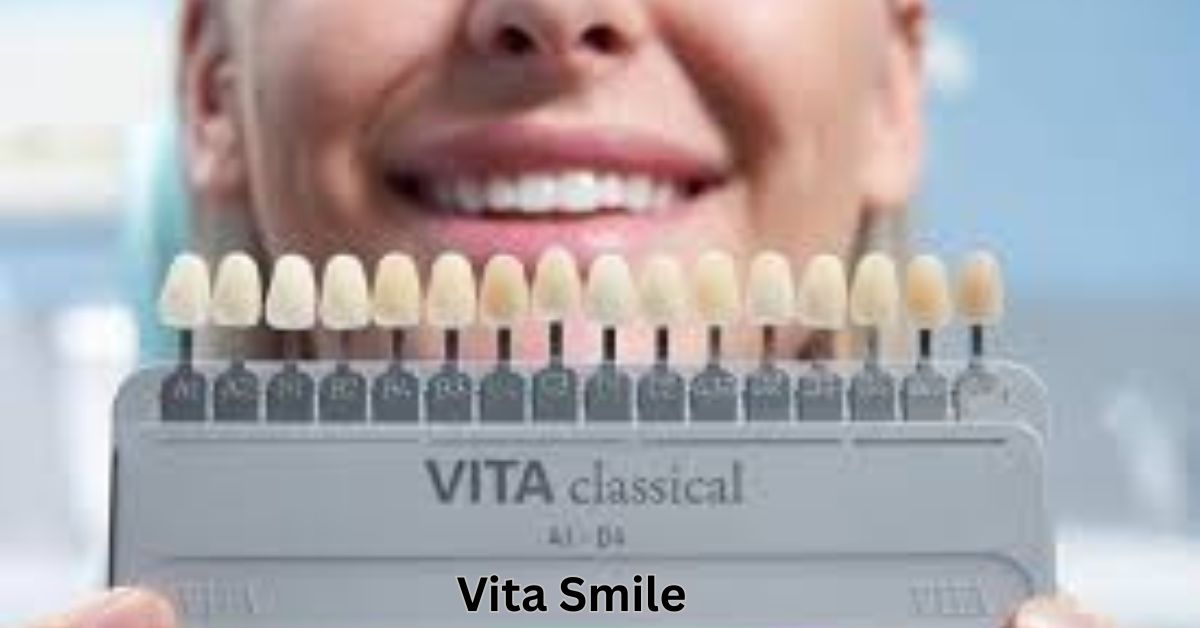HEALTH
Exercises and Enrichment: Key to Wellness

HEALTH
Choosing Plastic Surgery: What Patients Should Know

Rising Demand for Cosmetic Procedures
Over the past decade, cosmetic procedures have become increasingly popular, transforming cultural norms and patient expectations. Previously reserved for celebrities, these procedures are now accessible to everyday individuals. Plastic surgery statistics show millions of Americans pursue surgical and non-surgical options annually. This growth is attributed to technological advancements, increased awareness, open discussion, and the democratization of cosmetic medicine.
The trend is evident among a broad spectrum of people, encompassing various age groups, including women and men. Social media, video consultations, and more transparent conversations with medical professionals have empowered individuals to research and choose procedures that fit their lifestyle. Not everyone desires dramatic changes; for many, subtle enhancements and refreshed features are the goal. With such a shift, minimally invasive treatments have become particularly popular. For example, RF microneedling packages offer individuals noticeable results with far less downtime than traditional surgery. These advancements have moved cosmetic options from aspirational or intimidating to accessible and convenient for people managing family, career, and busy lives.
Most Popular Surgical and Non-Surgical Options
The demand for surgical enhancements has increased, with breast augmentation, liposuction, rhinoplasty, eyelid surgery, and tummy tucks being the most frequently performed surgeries. These surgeries are often sought for proportional changes or pronounced rejuvenation after weight loss, childbirth, or natural aging. They help boost self-esteem, address physical concerns, and align one’s appearance with one’s sense of identity. Non-surgical options, such as Botox, dermal fillers, and resurfacing, are also gaining popularity due to their convenience and lower barrier to entry. Radiofrequency microneedling, for example, uses thermal energy to tighten and revitalize skin, making it a popular choice for combating fine lines or skin laxity without surgical intervention. These non-invasive options are more productive and predictable than ever before.
Factors to Consider When Deciding on Surgery
Plastic surgery is a personal journey that requires self-reflection and careful planning. Reasons for seeking cosmetic change, such as self-care, confidence, or external pressure, are crucial. Patients who feel comfortable and informed are more likely to enjoy their results long-term. Personal health history, including being in good overall health, non-smoking, and mentally prepared, also plays a significant role in surgical candidacy. Open discussions with a provider align expectations with achievable outcomes. Seeking additional resources, references, or a second medical opinion is also recommended. Spending extra time upfront rather than rushing into a decision with lasting effects is better.
Safety Precautions and Recovery Tips
Whether a procedure is surgical or minimally invasive, safety takes precedence. Fully disclosing your medications, supplements, and medical history allows your provider to plan appropriately and mitigate risks. Preparing for surgery includes stopping specific medications, organizing transportation, and arranging aftercare, especially for the first couple of days post-operation.
- Prepare your living space to minimize movement and bending after your procedure.
- Follow any pre-surgery dietary or medication instructions to the letter.
- Designate a trusted friend or family member for emotional and logistical support.
- Know the warning signs of infection and complications, and keep your surgeon’s contact information handy.
Understanding the realities of recovery is key to achieving optimal results and avoiding disappointment or complications. Listen closely to aftercare guidance and allow your body to heal quickly; pushing for a quick return to regular activity can negatively impact outcomes. The U.S. Food & Drug Administration publishes vital updates, such as its advice about breast implants, and other procedural tips—consult these for up-to-date, science-backed recommendations.
Psychological Impact of Cosmetic Enhancements
Plastic surgery can significantly impact the body and mind, bringing renewed confidence and satisfaction. However, it’s crucial to acknowledge that surgery isn’t a cure-all for emotional or self-esteem issues. Practitioners often encourage psychological wellness checks during consultations, which benefit the patient journey. Supportive friends, realistic goals, and a healthy outlook are key to successful transformations. However, warning signs like persistent dissatisfaction with minor flaws or obsessive focus on perceived imperfections should be discussed. Addressing body dysmorphia before surgery can lead to more positive experiences and happier, more holistic outcomes.
How to Find a Qualified Surgeon
Selecting the right plastic surgery professional is crucial. Look for state medical board certifications, affiliations with reputable national organizations, and detailed descriptions of their experience. Ask about complication rates and revision policies. Prepare questions about specific procedures, recovery, risks, and long-term care. Ask about the surgeon’s continuing education and familiarity with the latest technologies. Please pay attention to their approach to consultations, as patient-focused surgeons prioritize your interests. Be wary of low-cost deals or pressure tactics, which may indicate a lack of experience or quality control. Trust and transparency are essential. Consider scheduling consultations with multiple board-certified surgeons.
Innovations and the Future of Plastic Surgery
Cosmetic medicine is experiencing rapid advancements, combining art and science. Innovations like 3D facial imaging, ultrasound-guided injectable filler techniques, and laser-assisted liposuction are transforming patient and doctor outcomes. Regenerative medicine, including fat grafting and stem cell use, promises improved healing and longer-lasting rejuvenation. The industry also recognizes the importance of ethics, sustainability, and patient equity. Surgeons are exploring eco-friendly practices, such as recyclable materials and safer anesthesia methods, to minimize environmental impact and make cosmetic care accessible.
HEALTH
What Are Lipotropic Injections

What Are Lipotropic Injections?
A Complete Guide to B12 and Fat-Burning Shots
In the ever-evolving world of health and wellness, lipotropic injections have gained serious popularity, especially among those pursuing weight loss and fat metabolism support. Marketed as fat-burning aids, energy boosters, and metabolic enhancers, these injections have been integrated into many weight loss programs and clinics.
But what are lipotropic injections, how do they work, and are they actually effective? In this comprehensive guide, we’ll explore the benefits, ingredients, risks, and science behind lipotropic shots to help you make an informed decision.
What Are Lipotropic Injections?
Lipotropic injections are a type of supplement delivered via intramuscular injection, designed to enhance fat metabolism and promote weight loss. The word “lipotropic” refers to compounds that help the liver process fat more efficiently. These injections typically contain a combination of:
-
Vitamin B12 (cobalamin)
-
Methionine (an amino acid)
-
Inositol (a vitamin-like compound)
-
Choline (essential nutrient)
Some formulas may also include L-carnitine, B-complex vitamins, or other fat-burning agents.
These ingredients work synergistically to boost energy, support the liver, and break down fat more effectively. That’s why lipotropic injections are often called “fat-burning shots” or “skinny shots.”
How Do Lipotropic Injections Work?
The primary role of lipotropic injections is to stimulate the liver—the body’s key organ for processing fats and toxins. By promoting the flow of fat and bile from the liver, lipotropic compounds can:
-
Prevent fat accumulation in the liver and body
-
Support energy production from fat metabolism
-
Enhance detoxification processes
-
Assist with appetite control in some individuals
While lipotropic injections alone are not magic weight loss solutions, they can complement a healthy diet and regular exercise to accelerate results.
Key Ingredients in Lipotropic Injections
Let’s break down the most common ingredients found in these injections and how they function:
1. Vitamin B12
-
Supports energy production
-
Helps with red blood cell formation
-
Essential for nervous system health
-
May reduce fatigue and improve focus
2. Methionine
-
An amino acid that aids in fat breakdown
-
Supports liver detoxification
-
Acts as an antioxidant
3. Inositol
-
Helps regulate insulin and mood
-
Promotes fat metabolism
-
Supports brain function
4. Choline
-
Crucial for fat transport and metabolism
-
Prevents fatty liver buildup
-
Supports memory and cognitive function
Optional Add-ons:
-
L-Carnitine: Assists in transporting fatty acids into cells for energy
-
B-Complex Vitamins: Aid in metabolism and reduce fatigue
What Are the Benefits of Lipotropic Injections?
Lipotropic injections are popular among people looking to boost weight loss and improve energy naturally. Here are the top potential benefits:
✅ 1. Enhanced Fat Burning
By supporting the liver and increasing fat transport, lipotropic injections may improve your body’s ability to metabolize stored fat.
✅ 2. Increased Energy Levels
Vitamin B12 and other nutrients in the injection can reduce tiredness and increase stamina—especially in people with deficiencies.
✅ 3. Improved Metabolism
Lipotropic ingredients may speed up your basal metabolic rate, meaning you burn more calories at rest.
✅ 4. Appetite Control
Some users report a reduced appetite, likely due to better blood sugar regulation and improved mood.
✅ 5. Liver Support and Detox
With enhanced liver function, your body becomes more efficient at eliminating toxins, which is key during weight loss.
Who Should Consider Lipotropic Injections?
Lipotropic injections may benefit people who:
-
Are trying to lose weight
-
Feel fatigued or sluggish
-
Have B12 deficiencies
-
Want to support liver health
-
Are plateauing in their weight loss journey
They are often used in medically supervised weight loss programs, especially when combined with a low-calorie diet, regular exercise, and behavior modification.
Note: Always consult a healthcare provider before starting any injection-based therapy.
Are Lipotropic Injections Safe?
For most people, lipotropic injections are safe when administered by a licensed healthcare professional. However, as with any supplement or treatment, side effects are possible.
Potential Side Effects of Lipotropic Injections
Common and mild side effects may include:
-
Redness or soreness at the injection site
-
Nausea or mild stomach discomfort
-
Headache or lightheadedness
Rare but more serious side effects can include:
-
Allergic reactions (itching, swelling, rash)
-
Increased heart rate or anxiety (especially with high B12 doses)
Always inform your doctor of any allergies or medical conditions before receiving lipotropic injections.
How Often Should You Get Lipotropic Injections?
Frequency depends on your goals and your healthcare provider’s plan. Typical protocols include:
-
1–2 injections per week for several weeks
-
Monthly maintenance shots for energy or metabolism support
Some clinics offer customized regimens based on individual needs and lab results.
Do Lipotropic Injections Really Work?
The answer isn’t one-size-fits-all.
Scientific evidence is limited, but anecdotal reports are generally positive—especially in people with B12 deficiencies or sluggish metabolism. While lipotropic injections alone won’t result in dramatic fat loss, they can support your weight loss strategy by:
-
Boosting motivation (via energy and mood)
-
Supporting liver detoxification
-
Helping your body mobilize stored fat more efficiently
✅ For best results, combine with a healthy diet, exercise, hydration, and sleep.
Where to Get Lipotropic Injections
You can typically receive lipotropic injections at:
-
Weight loss clinics
-
Wellness spas
-
Hormone therapy centers
-
Naturopathic doctor offices
-
Some primary care providers
Make sure the provider is certified and experienced in administering injections. You should also receive a consultation and possibly a blood test to determine if you’re a good candidate.
Final Thoughts: Are Lipotropic Injections Right for You?
If you’re committed to a healthy lifestyle and looking for an extra push toward your weight loss goals, lipotropic injections may be a helpful supplement. They’re not a miracle fix—but when combined with smart nutrition and fitness habits, they can make a measurable difference in your results and energy levels.
Always consult a licensed healthcare professional before starting any new supplement regimen. And remember—your long-term health and habits are the real key to lasting weight loss success.
HEALTH
Vita Smile: Boosting Your Health with a Brighter Smile
-

 GENERAL5 months ago
GENERAL5 months agoClassroom6x: Revolutionizing the Future of Learning
-

 ENTERTAINMENT5 months ago
ENTERTAINMENT5 months agoUnveiling the Mystery of Kashito_Toto: A Digital Frontier
-

 TECHNOLOGY5 months ago
TECHNOLOGY5 months agoUnlocking the Mystery of Vy6ys: A Hidden Gem
-

 TECHNOLOGY5 months ago
TECHNOLOGY5 months agoUnlocking the Power of SSIS 816: A New Era in Data Integration
-

 ENTERTAINMENT5 months ago
ENTERTAINMENT5 months agoSoapperTV: The Next Evolution in Streaming Entertainment
-

 GENERAL5 months ago
GENERAL5 months agoUnraveling Time: What Hour Was It 8 Hours Ago?
-

 GENERAL5 months ago
GENERAL5 months agoQuid Pro Quo Harassment: What It Is and Why It Matters
-

 ENTERTAINMENT5 months ago
ENTERTAINMENT5 months agoUnleashing Victory: Achievements in Backyard Football 2002

